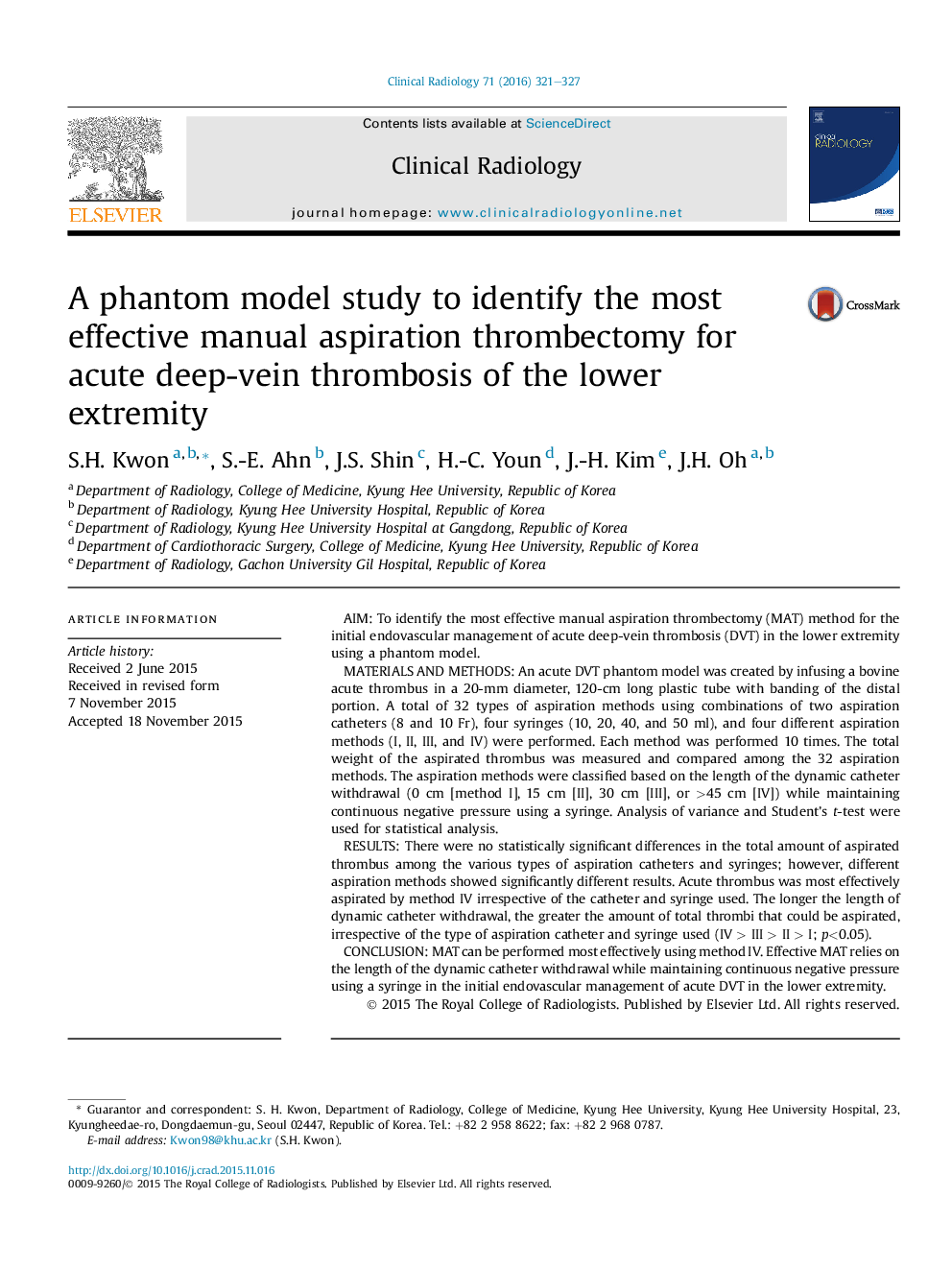| Article ID | Journal | Published Year | Pages | File Type |
|---|---|---|---|---|
| 3981395 | Clinical Radiology | 2016 | 7 Pages |
•Most effective manual aspiration thrombectomy (MAT) method was assessed by phantom model study.•Effective MAT is dependent on the length of dynamic catheter withdrawal.•Effective MAT can be performed using greater length of the dynamic catheter withdrawal.
AimTo identify the most effective manual aspiration thrombectomy (MAT) method for the initial endovascular management of acute deep-vein thrombosis (DVT) in the lower extremity using a phantom model.Materials and methodsAn acute DVT phantom model was created by infusing a bovine acute thrombus in a 20-mm diameter, 120-cm long plastic tube with banding of the distal portion. A total of 32 types of aspiration methods using combinations of two aspiration catheters (8 and 10 Fr), four syringes (10, 20, 40, and 50 ml), and four different aspiration methods (I, II, III, and IV) were performed. Each method was performed 10 times. The total weight of the aspirated thrombus was measured and compared among the 32 aspiration methods. The aspiration methods were classified based on the length of the dynamic catheter withdrawal (0 cm [method I], 15 cm [II], 30 cm [III], or >45 cm [IV]) while maintaining continuous negative pressure using a syringe. Analysis of variance and Student's t-test were used for statistical analysis.ResultsThere were no statistically significant differences in the total amount of aspirated thrombus among the various types of aspiration catheters and syringes; however, different aspiration methods showed significantly different results. Acute thrombus was most effectively aspirated by method IV irrespective of the catheter and syringe used. The longer the length of dynamic catheter withdrawal, the greater the amount of total thrombi that could be aspirated, irrespective of the type of aspiration catheter and syringe used (IV > III > II > I; p<0.05).ConclusionMAT can be performed most effectively using method IV. Effective MAT relies on the length of the dynamic catheter withdrawal while maintaining continuous negative pressure using a syringe in the initial endovascular management of acute DVT in the lower extremity.
